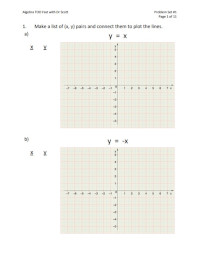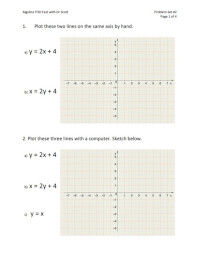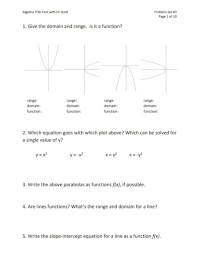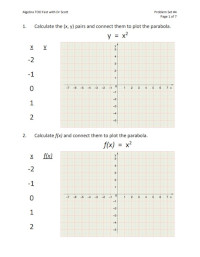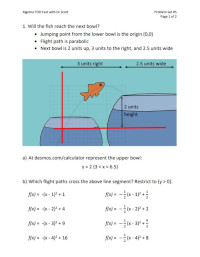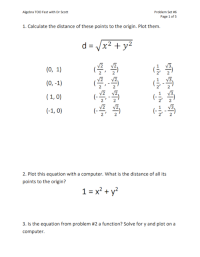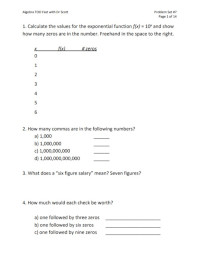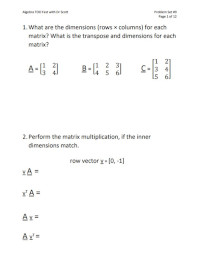Algebra 2 Worksheets
About our Algebra 2 Worksheets
What the Worksheets Cover
At a very high level, Algebra 2 can be described as the math used with two unknown variables, x and y. This corresponds to 2-dimensional problems that can be drawn out as a graph or plot on a piece of paper. Drawing out real world problems mathematically is known as modeling. Graphs are frequently used in science also, especially for analyzing experimental results.
It will be easier if you’ve mastered the algebra 1 worksheets before moving on to algebra 2.

Download our Algebra 2 Worksheets
Download the printer-friendly worksheets below, and also find the complete video solutions and lessons here.
Problem Set 1: Plotting Lines by Hand
Problem Set 2: Plotting Lines and Simple Parabolas with a Computer
Problem Set 3: Plotting Polynomial Functions
Problem Set 4: Plotting Parabolas by Hand Using the Vertex
PS4 changes the focus away from using the computer. Will go back to paper and pencil, now that we better understand our friend the parabola. You’ll learn how to just “see” what a function looks like in your mind and draw it out on paper. You might actually find that you can do algebra faster and better than the computer anyhow, now that you have a few basic skills down.
Problem Set 5: Modeling with the Parabola
PS5 focuses on computer modeling. We will look at some real world problems such as flight paths (of jumping fish!) and satellite dishes. Will focus on the parabola again. A new topic will be understanding the standard form of an equation, so that we can make simple adjustments to represent arbitrary shapes. And we make cool computer graphics too.
Problem Set 6: Plotting Conic Sections
PS6 focuses on plotting conic sections, which include our friend the parabola that has been studied extensively by this point. Other conic sections include circles, ellipses, and hyperbolas. We will also introduce the concept of asymptotes, which is related to limiting behavior.
Problem Set 7: Logs and Exponential Functions
PS7 is about logarithms, commonly called logs. We will emphasize base 10 logarithms and also the natural logarithm. Logs are very closely related to exponents, which are covered in the algebra 1 topics.

